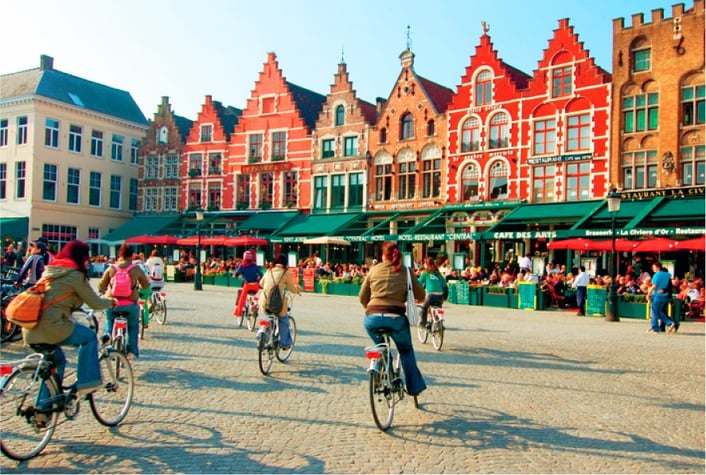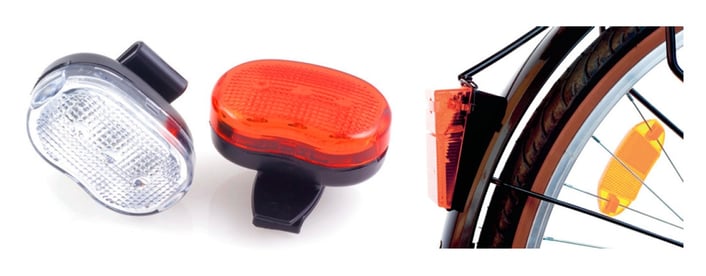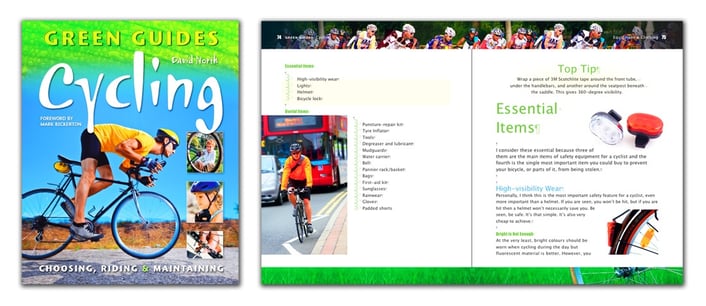 Cycling is a very simple activity that is widely enjoyed – even Arnold Schwarzenegger, who was seen on a bike in London recently, cannot resist the urge to jump on a bike and ride around. Cycling presents many opportunities and benefits to a lot of people. Some examples include the satisfying need for an adrenaline rush; the use of a good exercise tool to maintain personal health and exercise; a convenient transportation device to certain proximal destinations and exploring nearby scenic areas.
Cycling is a very simple activity that is widely enjoyed – even Arnold Schwarzenegger, who was seen on a bike in London recently, cannot resist the urge to jump on a bike and ride around. Cycling presents many opportunities and benefits to a lot of people. Some examples include the satisfying need for an adrenaline rush; the use of a good exercise tool to maintain personal health and exercise; a convenient transportation device to certain proximal destinations and exploring nearby scenic areas.
Recently the Tour de France saw a significant collision which resulted in Fabian Cancellara having to withdraw from the competition. Safety is always something to bear in mind, whether you're a cycling pro or commuter. With more and more people grabbing their bikes as the weather improves, we thought this would be a good time to go over some essential safety tips for those cycling in the city.
Stick to the Basics
- Helmet: Every beginner bike rider, whether a child or an adult, is advised to wear this piece of gear. It's common knowledge to all: when riding a bike, wear a helmet. It will not only protect your head, it will help a cyclist become more noticeable to cars and other vehicles.
- Mind the Curb: Being aware of traffic is one key aspect and keeping a safe distance between the bike and the traffic is another. What most cyclists do not know is that it can be dangerous to ride too far away from traffic and too close to the curb. Although you should maintain a safe distance, if a rider is too far away from traffic the chances of being noticed by drivers decreases. While riding on the road, make sure you allow enough space between the bike and the curb, as it could be very dangerous to hit a curb and ricochet into traffic. Giving some space will allow emergency room and prevent unnecessary accidents.

Follow the Law
- Slow Down: Usually people that are cycling to work are trying to save time, money and the environment. It is easy to ride fast along the streets, especially if you’re running a bit late! But when safety calls, it is a necessity for a cyclist to slow down. During highly congested traffic, tight roads, tight turns and stoplights, it is important to decrease your speed in order to have more control and be more aware of surrounding transportation. This will help avoid unexpected collisions such as car door openings, collisions with turning cars, and pedestrians crossing the streets.
- Avoid the Blind Spots: Especially when at a stoplight, it is very common for a cyclist to stop right along side the motor vehicles. It is very hard to remember when on a bike to be conscientious of a vehicle’s blind spots. Lorries and bigger trucks in particular have large blind spots that most cyclists forget about. Directly behind a lorry, close and directly in front of a lorry, and beside the driver and passenger doors are the most common blind spots. Just because a cyclist can see the side mirrors does not mean the driver can see them. Give space around vehicles and avoid long periods of riding and stopping in vehicles’ blind spots.
- Use Signals: All motor vehicles are equipped with turn signals, brake lights and flashing lights. Cyclists need to rely on their arms to signal, whether it is waving to make sure vehicles recognize the presence behind them, flashing arms left and right to signify a change in direction, or putting a hand out and up to signify slowing down. Any and all movements help a cyclist be seen by and communicate with others.

Extra Precautions
- Be Seen: Wear extremely bright, neon colors as well as reflectors while riding. This will allow vehicle operators to see a cyclist easily. It is in the best interest of the cyclist to have a reflector on every side and body part: arms, back, front, ankles, and head. Using a triangular shaped reflector on the back of a rider will help vehicle operators provide more caution as well.
- Avoid Obvious Dangers: At all costs avoid riding on extremely high traffic roads, narrow roads, riding at night, and riding with headphones. A cyclist needs to be as alert as possible. Avoiding distractions and obstructions will help prevent accidents.
- Riding with the Traffic: When riding down the street, avoid riding against traffic – it’s also against the law. Always ride with the traffic, because if there is a collision it will be much safer for the rider. For example, if a rider going against traffic riding 15 mph collides with a car going 45 mph; the impact will be 60 mph (15 + 45). If going in the same direction, when a rider going 15 mph collides with a car going 45 mph; the impact will only be 30 mph (45 – 15). That is half as fast!
- Mirrors and Headlight: Many cyclists average 17–18 mph. This grants cyclists the liberty to ride along side other fast moving vehicles. This equality on the road enlarges the potential dangers for cyclists as they are not as tough, big or prominent as motor vehicles. This being said, a cyclist should be equipped with the same essentials motor vehicles possess: side mirrors and a headlight. Side mirrors will help to prevent cyclists from accidentally weaving into high-speed traffic and will help with better control over the handlebars when looking at surroundings. A headlight will allow other traffic to be more aware of the rider.
For much more expert advice on cycling and bike maintence check out our book Cycling: Green Guides. Take a closer look at the book here. For Amazon, click here.
- For more information routes, Santander Cycles and additional safety tips, check out the Transport For London official site for cyclists.
- One simple thing bike owners should do regularly is inspect their brakes. Click here for a helpful article on how to do so. Also, you can click here for an excellent step-by-step guide for cleaning the rest of your bike.
- We have plenty of other blogs for cyclists. Whether it's finding a new route or keeping your bike in optimal condition, we'll have something for you. Click here to see the rest of our cycling articles.
This post was written by intern Kaiti Porter.




